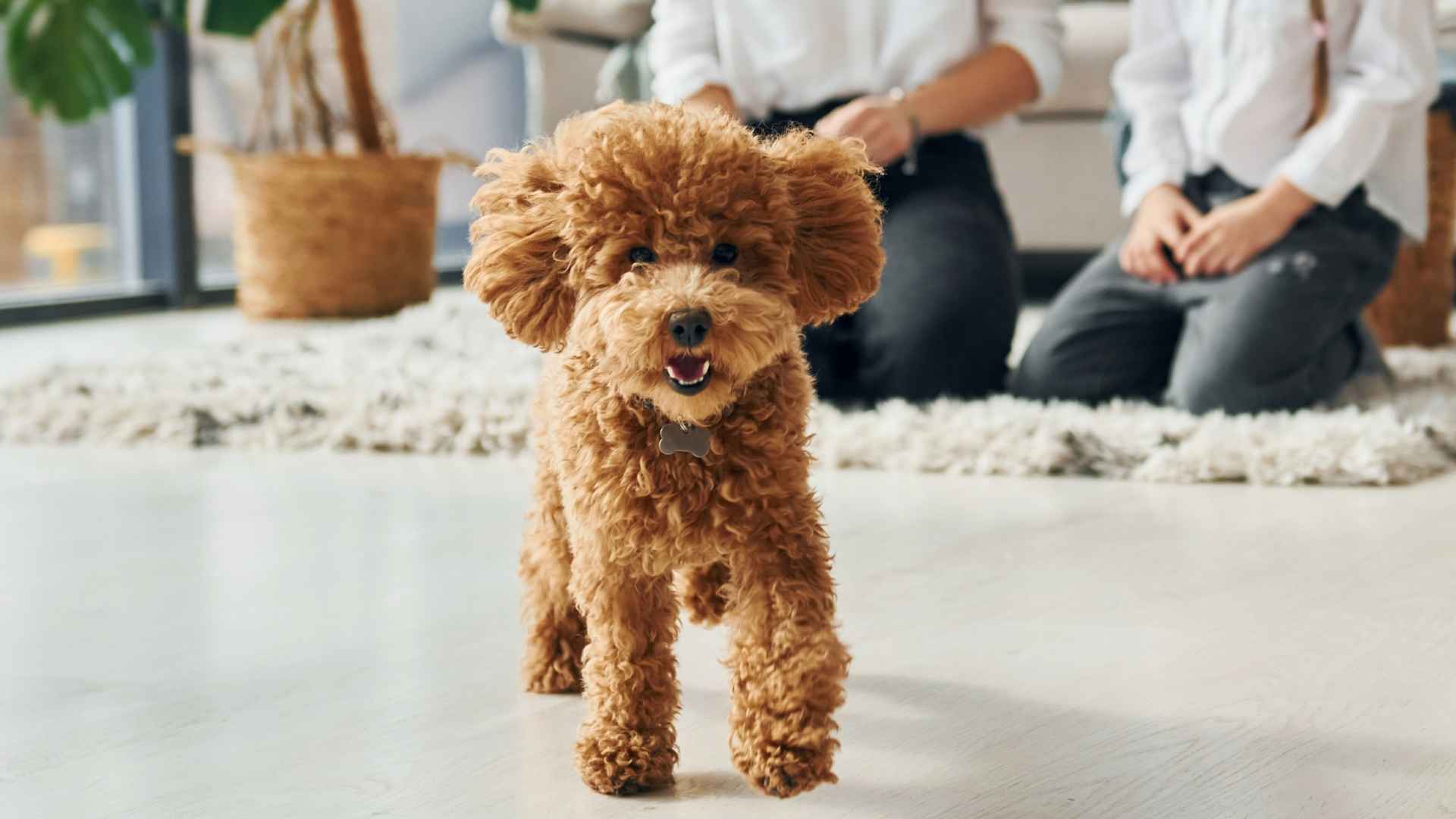When you bring home a tiny ball of fluff, you want it to stay by your side for as long as possible. The good news?
Some toy dog breeds may be small in size, but they’ve got mighty long lifespans. We’re talking 14, 15—even 18 years of tail wags, zoomies, and warm snuggles from your pocket-sized pal.
These little legends aren’t just adorable—they’re built for the long haul. Whether it’s their compact bodies, lower injury risk, or just an abundance of sass that keeps them kicking, toy breeds often outlast their larger canine cousins.
And the best part? They fit perfectly on your lap, in your tote, or curled up in a sunbeam like a living, breathing plush toy.
If you’re dreaming of the healthiest dog breed that’ll grow old with you—through job changes, new homes, and countless life chapters—these breeds offer longevity with a side of charm.
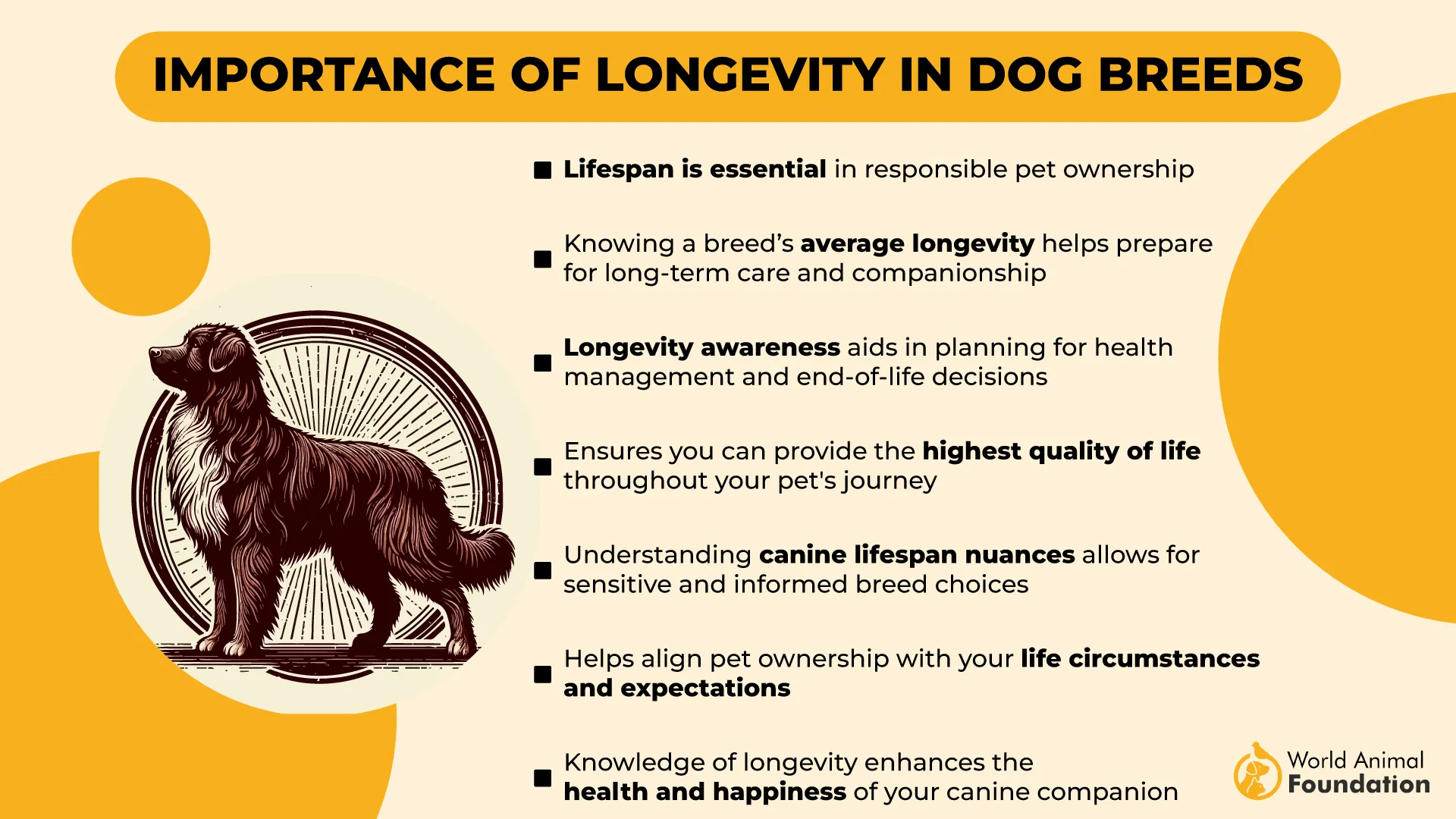
So grab your treat pouch and get ready to meet the toy dogs that don’t just stick around—they thrive for years and years to come.
Longest-Living Toy Dog Breeds
1. Chihuahua
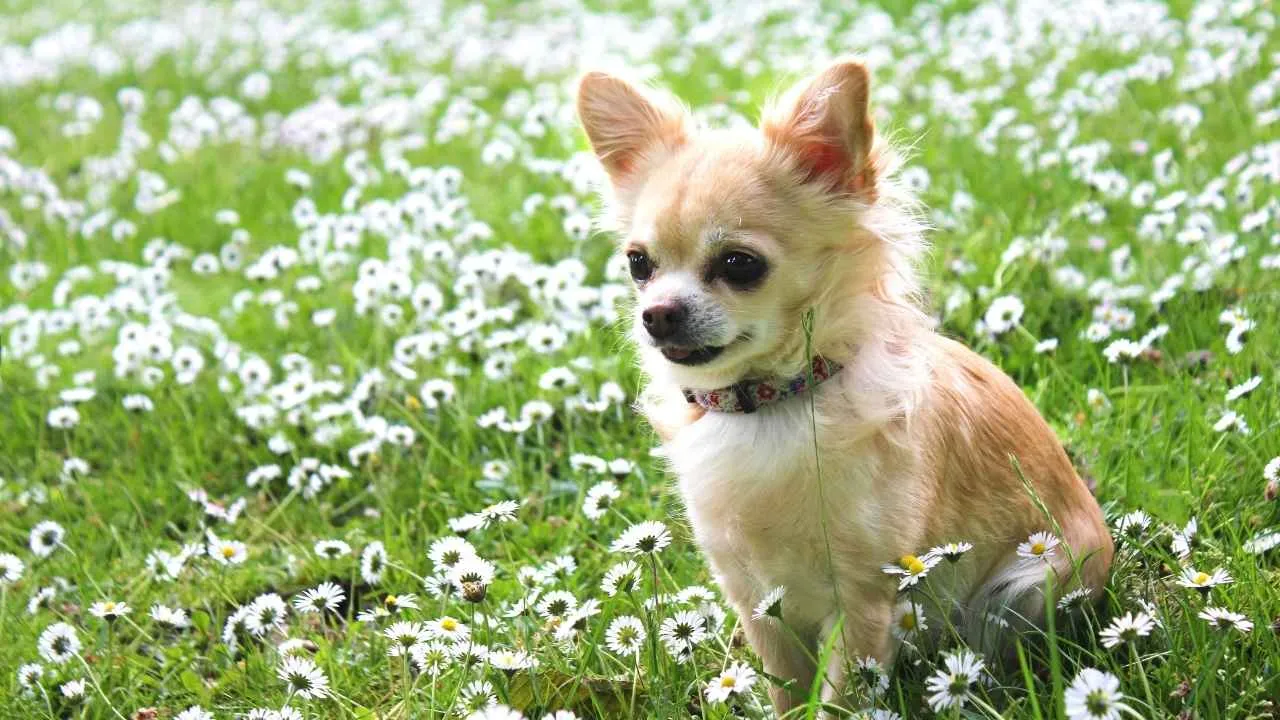
Lifespan: 14 to 16 years
Common Health Issues: Heart problems, patellar luxation, dental disease, and hypoglycemia
Meet the Chihuahua — affectionately called “Chis,” these pint-sized dynamos are the ultimate lap dogs with a heart as big as their attitude. Chihuahuas rank among the smallest dog breeds worldwide.
They average between 5 and 8 inches tall. Ideally, adult Chihuahuas should weigh no more than 6 pounds, although some can grow heavier than this. Loyal breed and loving to the core, they’re happiest when glued to your side, whether you’re binge-watching TV or running errands around town.
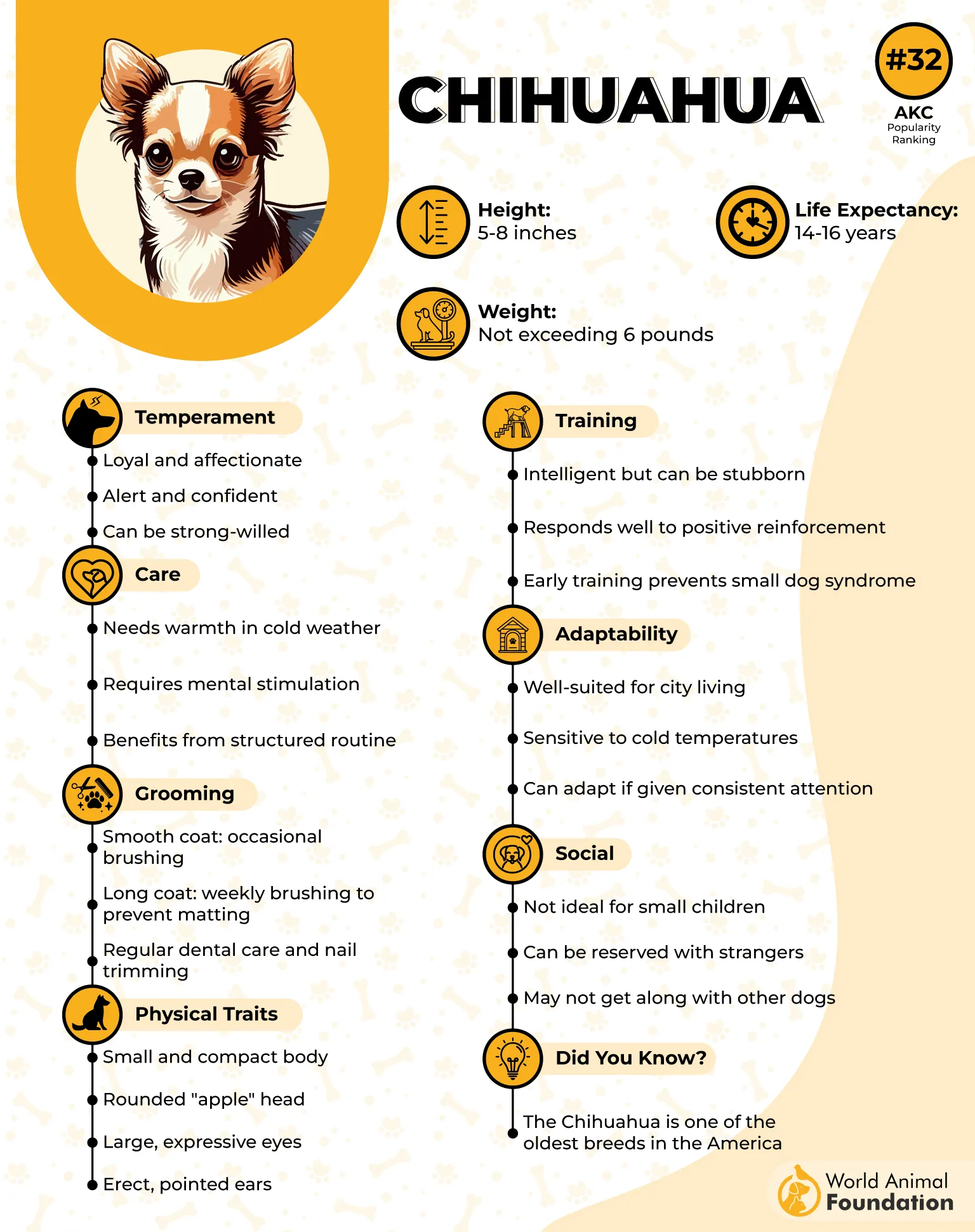
Despite their tiny size, Chihuahuas pack a lot of energy and spunk. Don’t be surprised if they throw a feisty bark or two at strangers or other dogs — they take their “big dog” role seriously!
One of the longest-living dog breeds out there, Chis can easily clock in 16 years of companionship, making them a lifelong friend full of love and occasional sass. They generally stay healthy, but watch out for common small-dog issues like dental problems and low blood sugar.
With daily walks and some indoor playtime to burn off their high energy, these tiny terrors will keep you entertained and utterly devoted — all wrapped up in a cute, tiny package that fits perfectly in your lap.
2. Toy Poodle
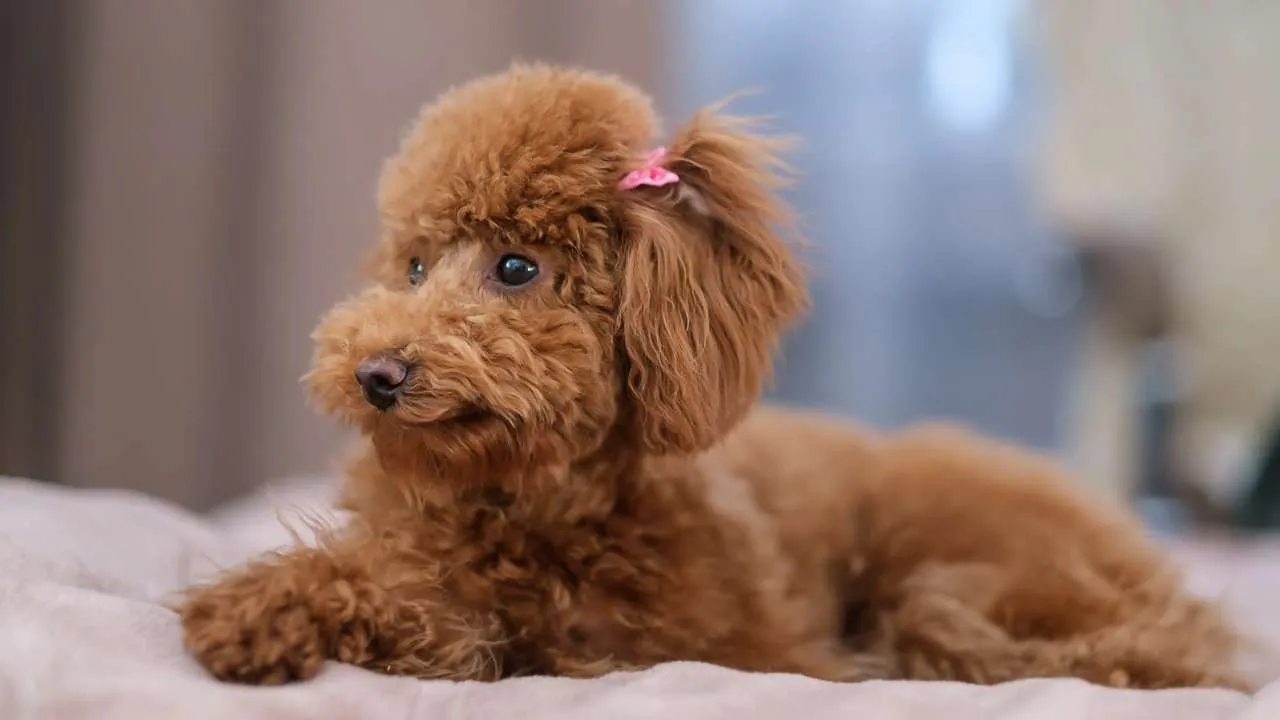
Average Lifespan: 10 to 18 years
Common Health Concerns: Patellar luxation, progressive retinal atrophy (PRA), epilepsy, and dental disease
Meet the Toy Poodle — small in size but HUGE in personality and smarts. These pint-sized geniuses stand no taller than 10 inches and weigh just 4 to 6 pounds, but don’t underestimate their ability to fill a room with charm, energy, and the occasional impressive trick or two.
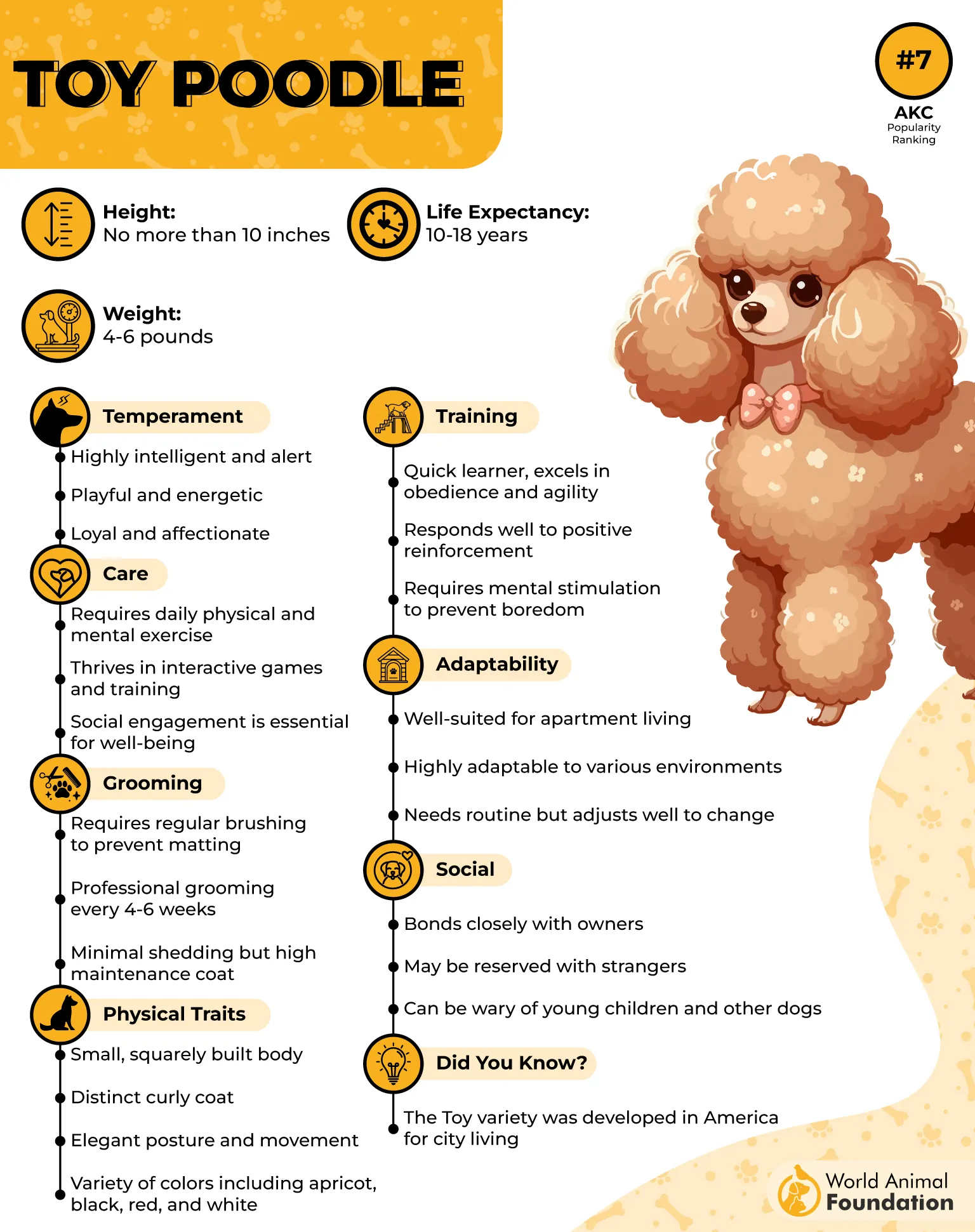
Toy Poodles are like the class valedictorians of the dog world — brilliant, eager to please, and always up for learning something new.
While generally calm indoors, these pups love their playtime and walks, happy to join any family activity, from fetch to chill couch cuddles. Plus, their minimal shedding makes them a smart pick for allergy sufferers — just remember, “hypoallergenic” isn’t a guarantee for zero sneezes.
Socialized early, they’re playful, confident, and get along well with kids and other pets (though, as always, puppy and child interactions should be supervised — nobody wants any accidental doggy dives!).
Toy Poodles are a long-term, joyful investment packed in a curly little bundle of fun and affection. Toy Poodles also don’t shed much, so they can be a smart choice for some people with allergies. However, there is no such thing as a completely “hypoallergenic” dog.
3. Maltese

Lifespan: 12 to 15 years
Common Health Issues: Dental problems, luxating patella, white shaker syndrome, and tear staining
The Maltese is basically the red carpet celebrity of toy dogs — famous for their flowing, silky white coat that’s just begging for a glam photoshoot. These tiny charmers weigh in at under seven pounds and stand about 5 to 8 inches tall, but don’t let their dainty looks fool you.
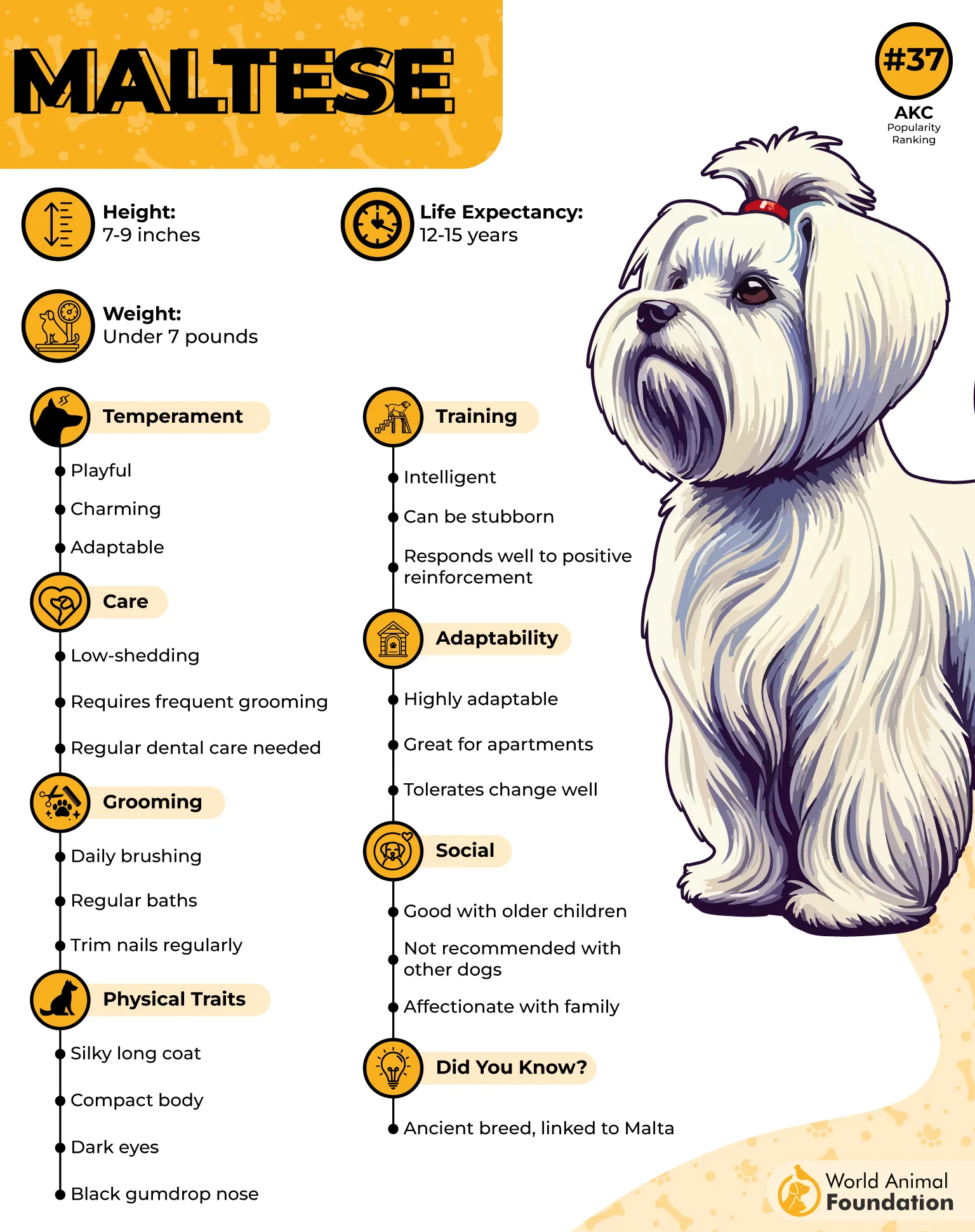
Beneath that aristocratic, “I belong in a palace” vibe is a hardy little adventurer ready to chase after squirrels or steal your heart in a heartbeat. Maltese are alert watchdogs in miniature form — fearlessly barking at any suspicious activity (including your own shadow).
The Maltese is relatively easy to train, thanks to its playful, energetic, and loving personality. This makes it a great companion for gentle older children and seniors alike, though its small size means it can sometimes be a tripping risk in busy households.
These pups are surprisingly athletic and can shine in agility courses, proving they’re not just fluff with no substance. They’re low-shedding, long-lived, and make fast friends across all age groups.
That said, they do have a stubborn streak, so if you want a well-mannered Maltese, you’ll need to bribe them with treats and patience during training.
4. Papillon
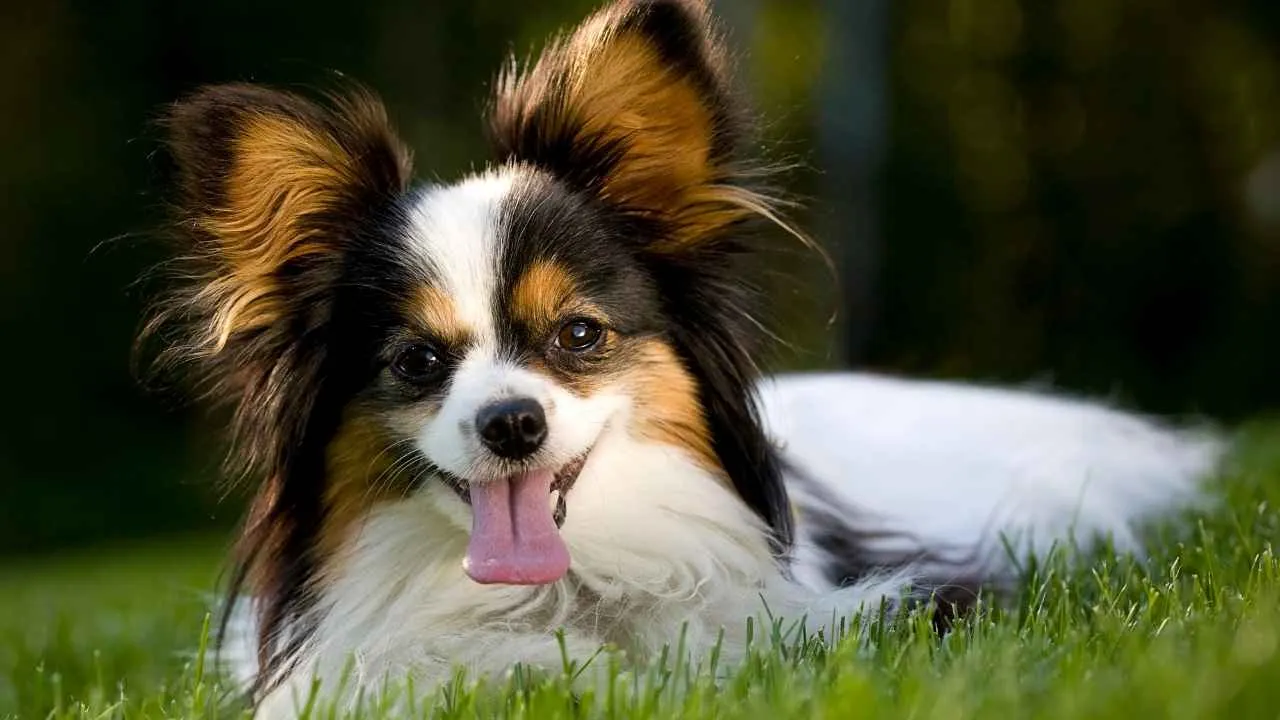
Life expectancy: 14 to 16 years
Common Health Issues: Patellar luxation, dental problems, heart issues, and sometimes progressive retinal atrophy (PRA)
Say hello to the Papillon — the “butterfly dog” whose name literally means “butterfly” in French, thanks to those iconic, wing-like ears that make them look like they’re ready to flutter away at any moment.
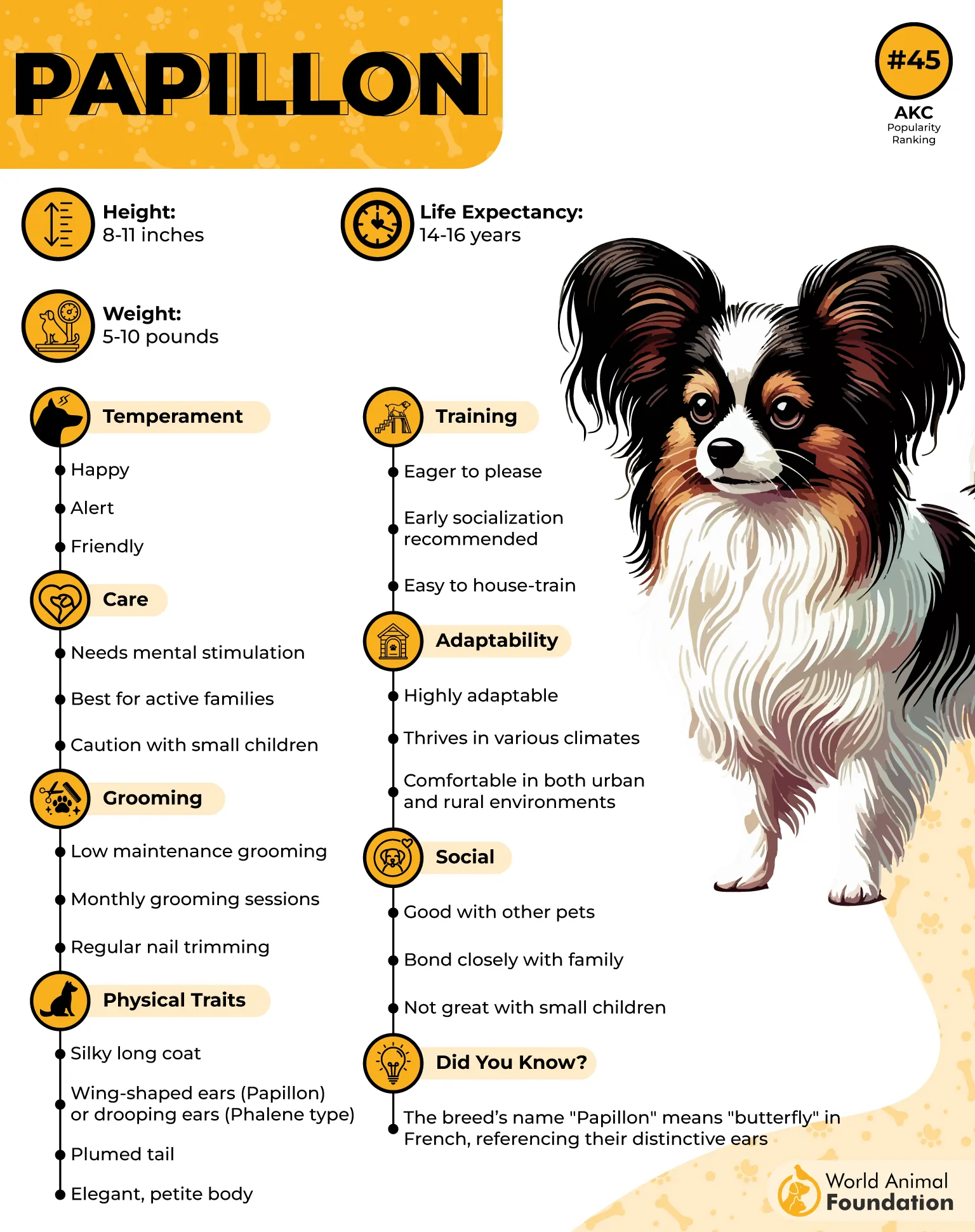
Brains, energy, and charm? This breed has all three in spades. According to Britannica, Papillons are the Einsteins of the toy world — smart, highly trainable, and eager to please. If there’s a doggy obedience or agility contest, you better believe a Papillon will be there, stealing the show and maybe even your heart.
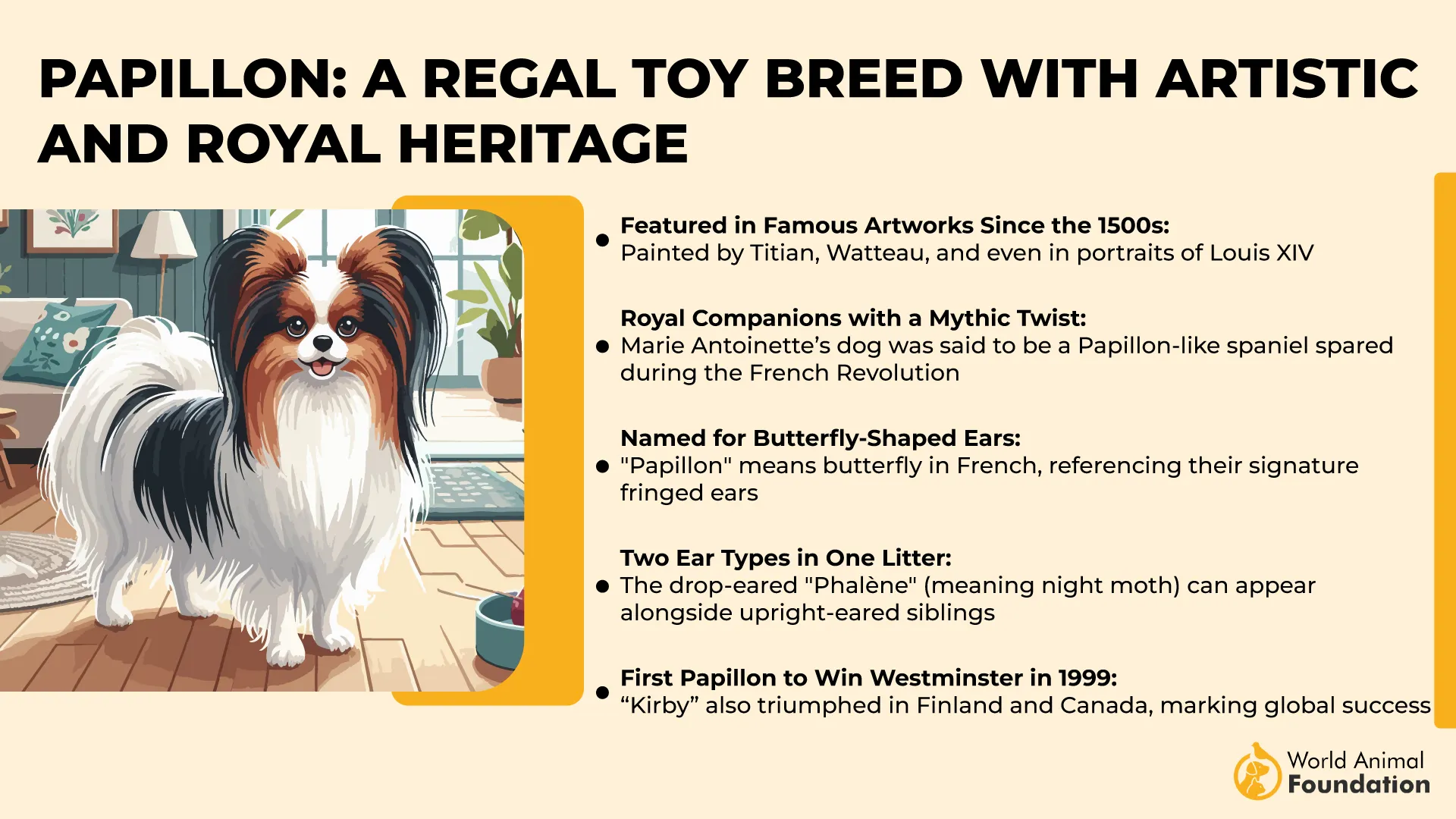
Despite their long, flowing coat, these little athletes are low-maintenance fur-wise — no serious matting issues here, thanks to a light undercoat and moderate shedding. Perfect for pet parents who want beauty with brains without a daily grooming marathon.
Papillons get along famously with other pets and people of all ages. They’re gentle companions for kids and seniors alike, but heads-up: their tiny size means they can become accidental tripping hazards for less steady feet (think of them as adorable banana peels).
With a lifespan stretching up to 16 years, they’ll be fluttering by your side for a good long time, ready to learn, play, and love.
5. Pomeranian
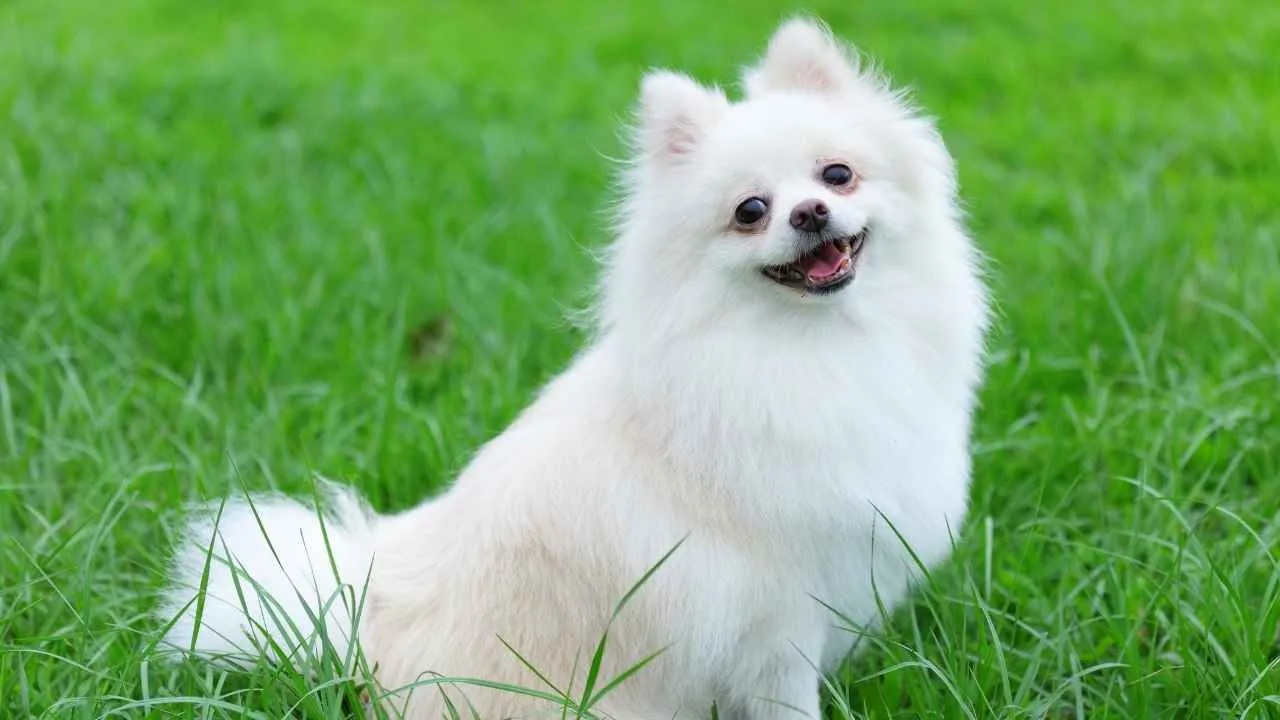
Average Lifespan: 12 to 16 years
Common Health Issues: Dental problems, tracheal collapse, patellar luxation, and heart disease
Meet the Pomeranian — the fluffy little firecracker that’s basically a pocket-sized diva with a big personality. Standing at a mere 6 to 7 inches tall, these tiny fluffballs have been stealing hearts (and stealing the spotlight) for hundreds of years.
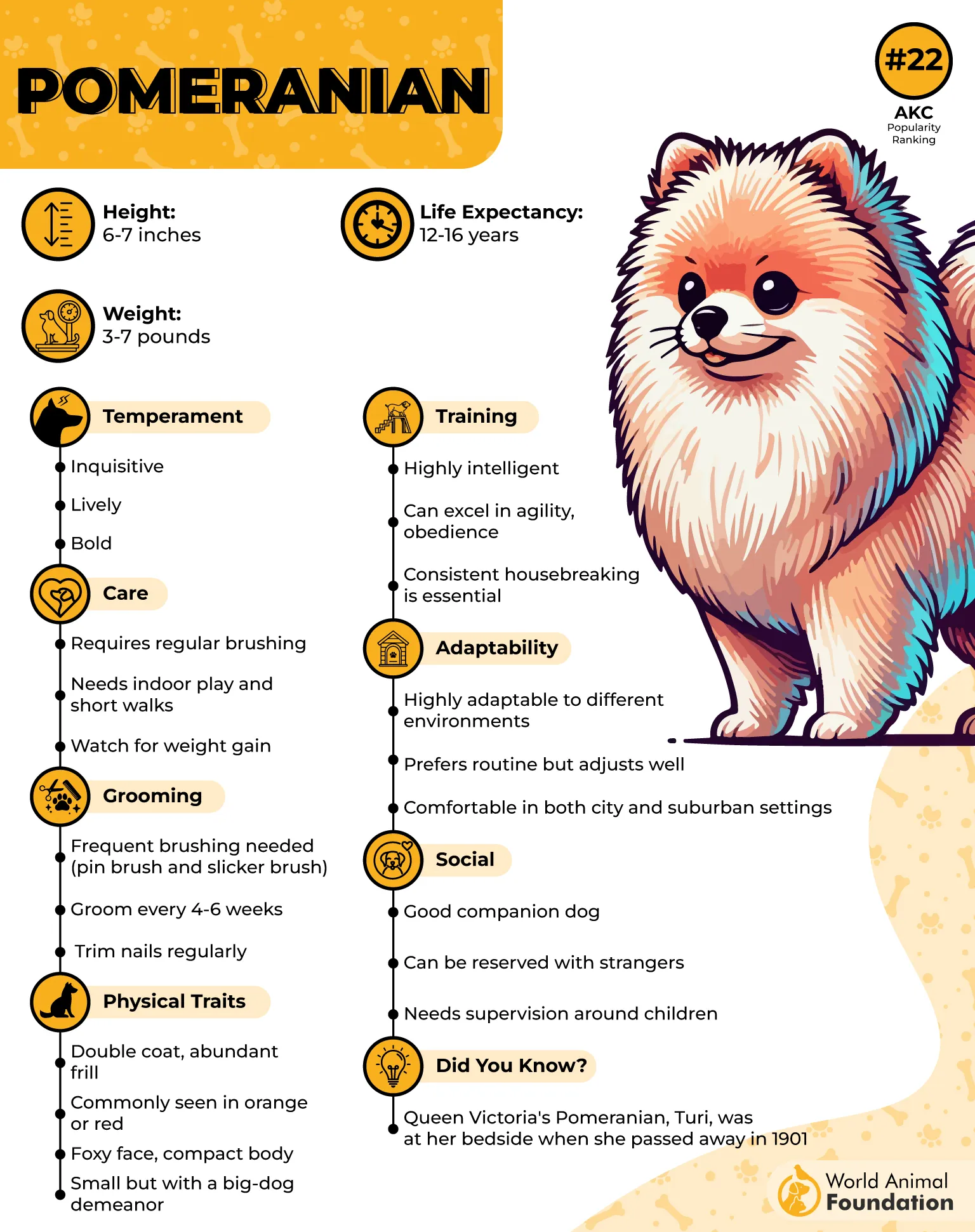
Don’t be fooled by their dainty size — Poms are alert, sharp, and a surprisingly good watchdog, as per WebMD. They’re the “tiny alarm system” that lets you know when the mailman or a suspicious squirrel is near.
Fair warning: they can get a bit possessive over toys and food, so sharing isn’t always their strong suit.
Their luscious double coat requires weekly pampering with a brush, or else you’ll end up with more fur tumbleweeds than you bargained for. A little grooming goes a long way in keeping their coat fluffy, beautiful, and tangle-free.
Pomeranians are a long-term commitment — with lifespans stretching up to 16 years, they’re loyal companions for the long haul (and they’ll happily remind you of their presence every day with a bark or two).
6. Shih Tzu
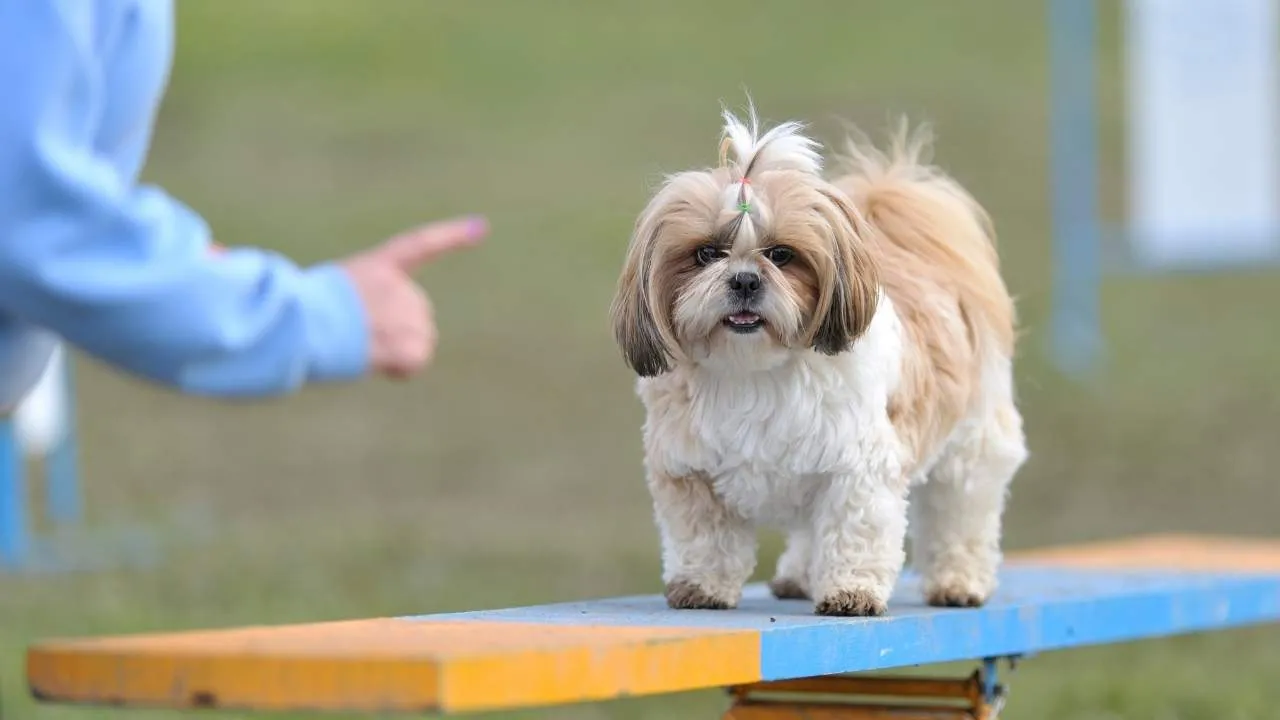
Lifespan: 10 to 16 years
Common Health Issues: Brachycephalic airway syndrome (hello, snorts and snores!), eye problems, hip dysplasia, and dental issues
Ah, the Shih Tzu — the royal furball that’s basically a walking cloud of charm and sass wrapped in a smooshed face. These little dynamos are the beloved darlings of toy dog fans everywhere, adored for their sweet temperaments and adorable “snort-snores” that double as a sleep soundtrack.
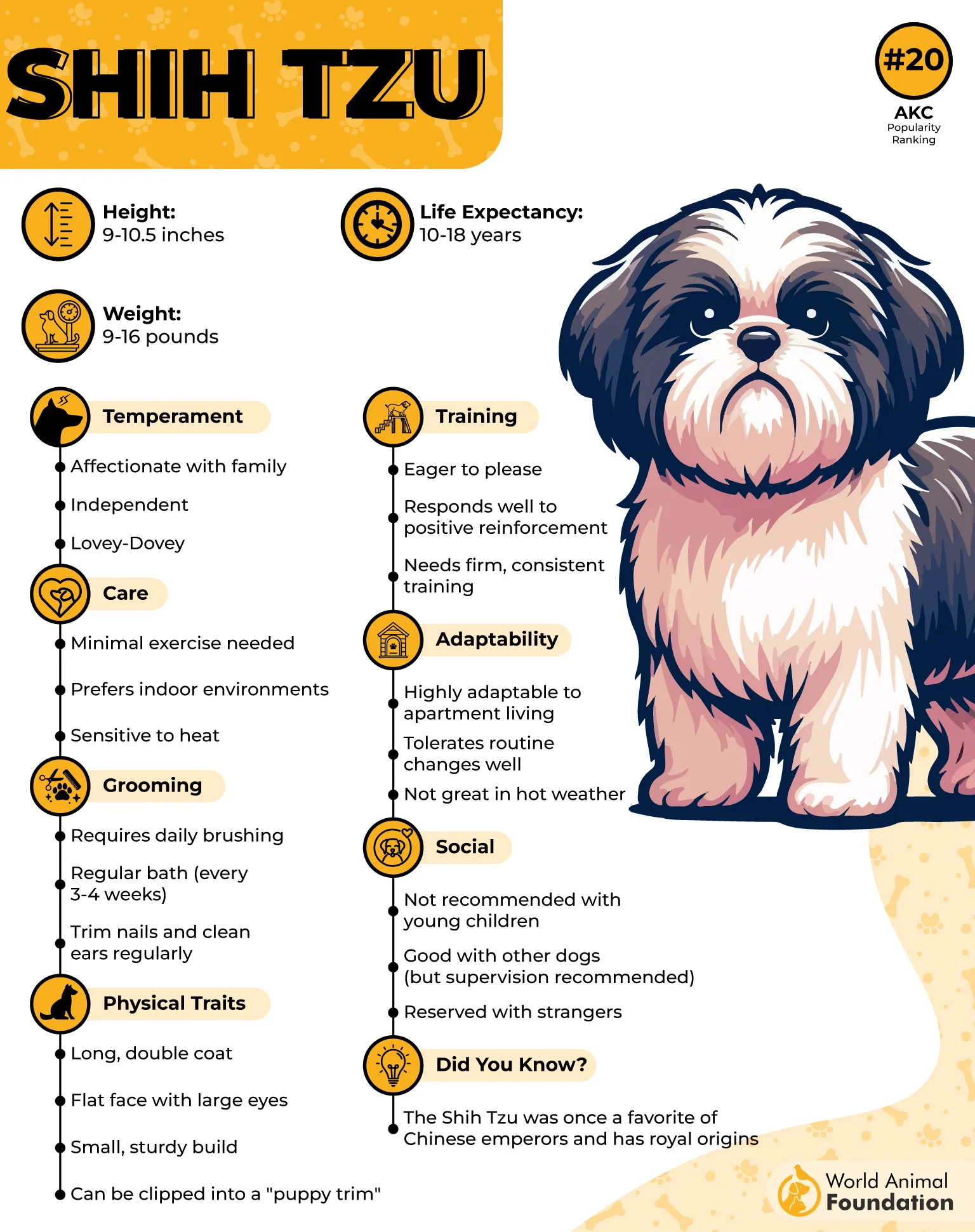
Because of their brachycephalic (short-nosed) mug, they come with a signature snuffling style — think of it as their own unique personality trait that makes them impossible to ignore (or resist).
These social butterflies warm up fast to strangers and fit right into families of all sizes, whether you’ve got a houseful of kids or just you and your favorite couch.
Their petite stature makes them a perfect apartment buddy, and bonus: they’re often hypoallergenic, so sneezing during cuddle time can be kept to a minimum.
Shih Tzus aren’t just pretty faces; they’re smart, affectionate, and have a stubborn streak that means training takes patience and treats. But hey, who can say no to that adorable face?
7. Affenpinscher
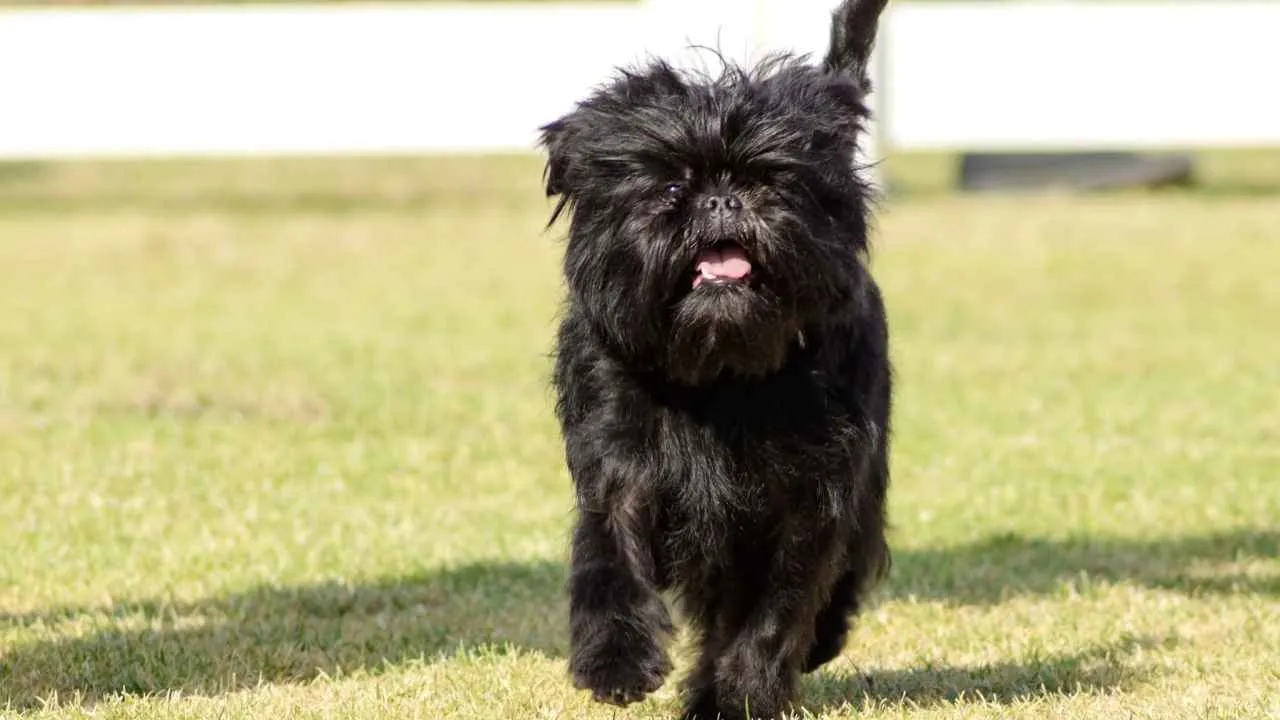
Lifespan: 12 to 15 years
Common Health Issues: Patellar luxation (knee issues), hip dysplasia, heart problems, and occasional dental troubles
Say hello to the Affenpinscher, or as the Germans affectionately call it, the “monkey dog” — because with that mischievous face and endless curiosity, they’ll have you wondering if they’re part primate.
These pint-sized dynamos pack a lot of personality into a small frame, making them a perfect companion for apartment dwellers and frequent travelers alike.
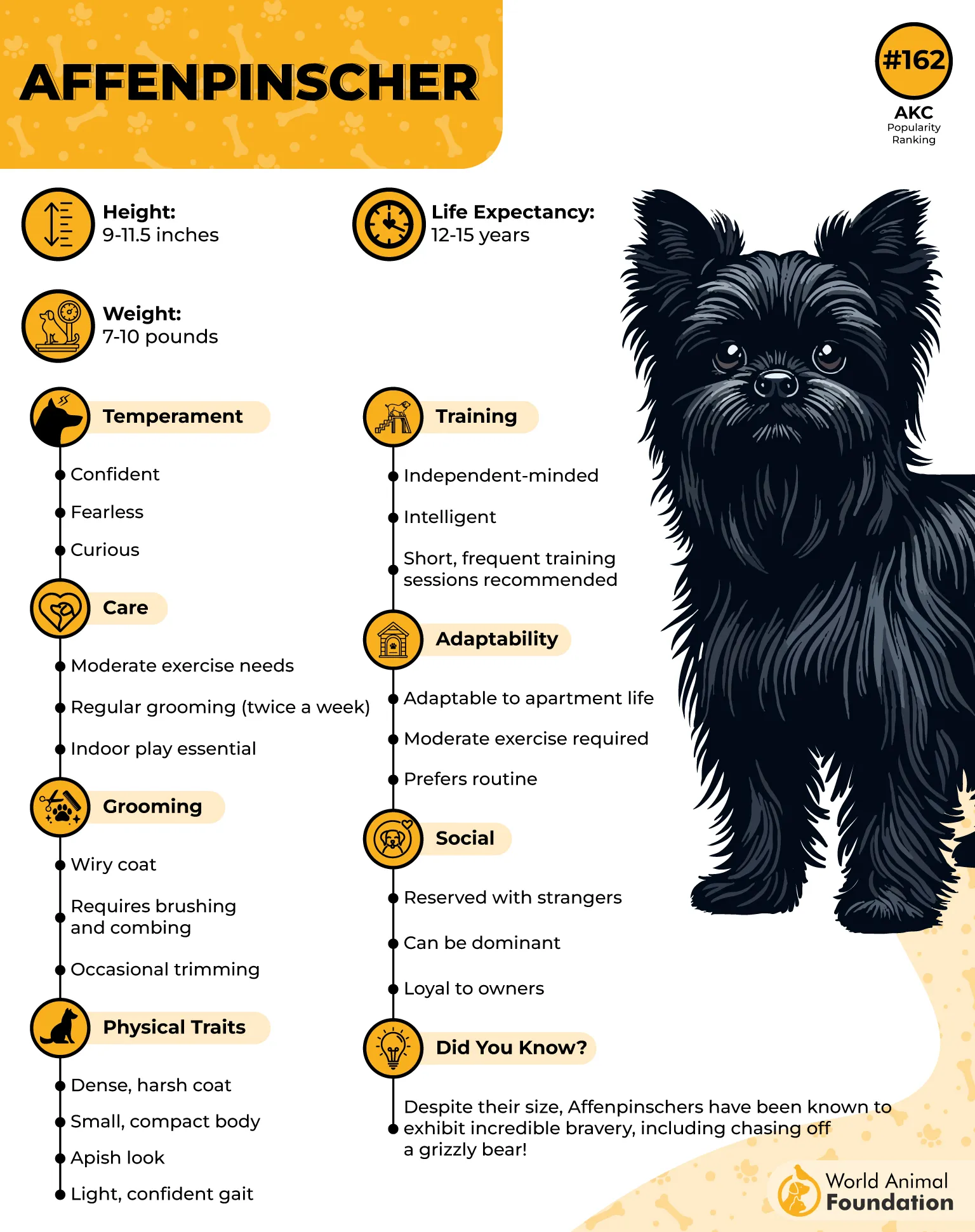
Don’t let their size fool you: these guys are loyal to a fault, alert as little watchdogs, and curious enough to keep life interesting (and occasionally chaotic). They tend to be quiet unless they spot something suspicious, like a suspiciously quiet mailman or a squirrel planning world domination.
Exercise? The Affenpinscher prefers the indoor Olympics: toy-chasing, zoomies, and a brisk walk or two. No marathon training required — though they’ll happily join you if you’re jogging to the fridge for snacks.
According to AKC, training an Affenpinscher can be a bit like teaching a very clever human — independent, sometimes stubborn, but smart enough to learn if you keep it fun. Patience and treats go a long way!
Conclusion
When it comes to the longest living toy dog breeds, small breeds like the Yorkshire Terrier, Chinese Crested Dogs, Miniature Schnauzer, and Lhasa Apso top the list—some even earning a Guinness World Record! These fun-loving pups, originally bred for companionship, are known for their good health, silky hair or wire-haired coats, and energetic personalities. With proper care, including regular grooming, routine veterinary care, regular exercise, mental stimulation, and a high-quality diet, these dogs tend to live well into their mid-teens or longer.
Though toy dogs may be tiny, they’re a hardy breed, proof that great things come in small, fluffy packages. Whether it’s the spirited Jack Russell Terrier or the cheerful Bichon Frise, these devoted breeds make great family pets and can enjoy a longer life with an active lifestyle and a healthy weight.
Medium-sized dogs or even larger dogs like Australian Cattle Dog, Australian Shepherd can also live a happy, long life. For any dog owner, providing proper diet and love means helping your best dog live the happiest, healthiest dog’s life possible—outliving many larger breeds and even some other breeds entirely!


